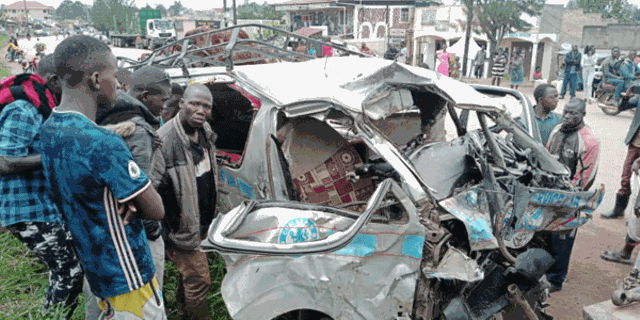Uganda road traffic deaths climb to 12 people per day
What you need to know:
- Of these road deaths, 28 people died on the same day on May 4 after a Link bus plunged into a tea garden in Fort Portal on its way to Kampala and others died in a crash that involved three vehicles on Mbale-Tirinyi road.
Traffic police statistics show 118 people were killed in road crashes between April 24 and May 4 this year. These 10-day road crash deaths translate into about 12 people losing their life every day. The daily human slaughter on Uganda roads has ‘stabilised’ at 10 deaths per day.
Of these road deaths, 28 people died on the same day on May 4 after a Link bus plunged into a tea garden in Fort Portal on its way to Kampala and others died in a crash that involved three vehicles on Mbale-Tirinyi road.
At least 21 people died in the Link bus crash while seven others died in Tirinyi incident. The Assistant Superintendent of Police (ASP) Faridah Nampiima, the spokesperson of the traffic police, explains that 23 people died on two public holidays namely International Labour Day on May 1, and Eid on May 2.
Ms Nampiima further explains that 67 other people died between April 24 and April 30. This means the last six days of last month had 11 people killed in road carnage per day. These road killings are over and above the daily national road killings of 10 people per day.
Police say driving vehicles in dangerous mechanical condition, speeding, reckless driving, not wearing seatbelts and crash helmets have been the major contributors to these gruesome road killings.

“When we conduct operations against traffic offenders, you realise many people don’t wear seatbelts. People are driving DMCs. Bodaboda riders are not wearing helmets. For instance, in our operations of last week, we had 2,089 drivers of DMCs, we had 1,709 drivers driving recklessly, 446 were speeding, 760 were not wearing seatbelts and 606 had no crash helmets,” she said.
Mr Sam Bambanza, a researcher on road safety and executive director Hope for Victims of Traffic Accidents (HOVITA), believes police and other agencies like UNRA, Ministry of Works and Transport as well Ministry of Health have not done enough to prevent road crashes.
He explains that road carnage has consistently been high because post-crash investigations are always neglected. According to Bambanza, it would be impossible to reduce road crashes if the causes are not established. This, he says can only be achieved if police and other agencies are able to know whether the cause of the crash was due to road terrain, weather, vehicle condition or driver error.
“The road safety has five pillars and the last one is post-crash. Post-crash has emergency, hospitals, insurance, police investigations, judiciary and rehabilitation. That is the area that is neglected. Without comprehensive post-crash investigation, you cannot establish or recommend what should be done to prevent a similar crash from occurring,” Mr Bambanza said.
Asked on whether police just give crash numbers and do little to prevent such incidents, ASP Nampiima explained that human indiscipline on the roads is what is killing Ugandans. She attributes this to the fact that in areas where they have put checkpoints, crashes have tremendously reduced yet they were previously known as blackspots. She adds that they have noticed that gruesome crashes are happening in places where they don’t have checkpoints yet police have no capacity to be everywhere.

“Every day we lose 10 people in the road carnage. Road checkpoints are there and we put them in places that used to be blackspots. In those places, accidents have reduced. Nowadays accidents are happening in places where we don’t have road carnage. We cannot have road checkpoints everywhere,” she said.
Bambanza challenges police to provide figures of drivers who get prosecuted out of the more than 12,000 crashes recorded every year.
Bambanza says uninvestigated road crashes have left many people languishing in pain without anyone catering for their medical bills or compensating the victims who sustain permanent injuries. This argument is backed by Sonia Kyoshaba 23, who is currently incurring a lot of medical expenses after a recklessly overtaking vehicle in Kisaasi knocked her down when she was on a motorcycle.
“It is almost a year, I haven’t received any help from him. It is my family and friends who have supported me in this. I haven’t seen the owner of the car. But we have a case in court. One of the family members got the car records because it remained at the scene of crash after getting a tyre puncture and it was abandoned there.”

Nampiima emphasizes: “We should talk about being disciplined on the road so that we can fight carnage. People should stop driving recklessly because it is a major cause of carnage on the road. People should reduce speeding because is a major cause of road crashes. In case someone is in the car and the driver is driving recklessly, you call us. It is everyone’s responsibility.”
The ministry of transport has often issued temporary bans on buses that have killed passengers in big numbers. It is not clear what such bans, the latest being on Link buses, have achieved. Previously bans were issued against Global and Gaagaa bus companies.

